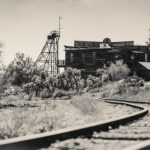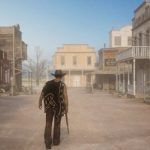 Technology
Technology  Technology
Technology  Humans
Humans 10 Everyday Human Behaviors That Are Actually Survival Instincts
 Animals
Animals 10 Animals That Humiliated and Harmed Historical Leaders
 History
History 10 Most Influential Protests in Modern History
 Creepy
Creepy 10 More Representations of Death from Myth, Legend, and Folktale
 Technology
Technology 10 Scientific Breakthroughs of 2025 That’ll Change Everything
 Our World
Our World 10 Ways Icelandic Culture Makes Other Countries Look Boring
 Misconceptions
Misconceptions 10 Common Misconceptions About the Victorian Era
 Mysteries
Mysteries 10 Strange Unexplained Mysteries of 2025
 Miscellaneous
Miscellaneous 10 of History’s Most Bell-Ringing Finishing Moves
 Technology
Technology Top 10 Everyday Tech Buzzwords That Hide a Darker Past
 Humans
Humans 10 Everyday Human Behaviors That Are Actually Survival Instincts
 Animals
Animals 10 Animals That Humiliated and Harmed Historical Leaders
Who's Behind Listverse?

Jamie Frater
Head Editor
Jamie founded Listverse due to an insatiable desire to share fascinating, obscure, and bizarre facts. He has been a guest speaker on numerous national radio and television stations and is a five time published author.
More About Us History
History 10 Most Influential Protests in Modern History
 Creepy
Creepy 10 More Representations of Death from Myth, Legend, and Folktale
 Technology
Technology 10 Scientific Breakthroughs of 2025 That’ll Change Everything
 Our World
Our World 10 Ways Icelandic Culture Makes Other Countries Look Boring
 Misconceptions
Misconceptions 10 Common Misconceptions About the Victorian Era
 Mysteries
Mysteries 10 Strange Unexplained Mysteries of 2025
 Miscellaneous
Miscellaneous 10 of History’s Most Bell-Ringing Finishing Moves
10 Wild Facts About the Mutiny on the HMS Wager
It is safe to say that in the 18th century, sailing was not for the faint of heart. As well as the dangers the sea itself posed, seamen had to be prepared to face storms, rats, lice, diseases, and more. If they were in the navy, they had the prospect of enemies to deal with, too. These were all things that sailors would have expected and could deal with, but there was one more risk they could not predict or really prepare for: mutiny.
Mutinies are rare, and perhaps that is why people find them so fascinating. The famous mutiny on the HMS Bounty was turned into no fewer than five feature films during the 20th century. However, there was another naval mutiny from the same era that received far less attention despite being the more harrowing tale. That was the HMS Wager, whose few survivors faced almost all of the risks above and told a story that leaves one questioning whether fate really can conspire against things.
Here are ten wild and shocking facts about that tragedy and what led the crew of HMS Wager to mutiny against their captain.
Related: Top Ten Intriguing Shipwreck Mysteries That Were Recently Solved
10 The Name “Wager” Would Turn Out to Be Appropriate
The HMS Wager was named for Sir Charles Wager, who was First Lord of the Admiralty when the ship was purchased from the East India Company by the British navy in 1739. The name, however, would turn out to be ominous, for every man who stepped on board was essentially taking a gamble with their life. Part of what made sailing on the Wager such a big risk was the fact that it had been purchased and not built.
It was on its way to fight the Spanish in South America, yet it was really a merchant ship that had been adapted for naval use, unlike the other purpose-built warships in the fleet. One historian described it as “tubby and unwieldy,” and unwieldy is really not ideal when sailing around Cape Horn, where it was headed.
The Cape was considered to be one of the most dangerous regions in the world to sail, subjecting ships to 200mph (321 km/h) winds, 90-foot (27.5-meter) waves, icebergs, rocks, and the strongest currents on Earth. Needless to say, boarding the Wager was a bet which did not pay off for most.[1]
9 It Was Basically an Authorized Pirate Ship
The HMS Wager and its crew were participants in one of the most strangely named wars of all time: the War of Jenkins’s Ear. It was called that because of the evidence brought before the British parliament that triggered it, which was the amputated ear of Captain Robert Jenkins. Jenkins claimed it had been cut off by Spanish coast guards in the West Indies several years earlier, and although there were many other examples of Spanish hostility toward British ships, politicians latched onto Jenkins’s story to start the war in 1739.
In return for Spanish harassment and pillaging of British ships, the Wager was part of a fleet sent around the world to “annoy and distress” Spanish interests. Specifically, the Wager was on a secret mission to engage in piracy against the Spanish. It was to pursue and capture “the prize of all the oceans,” a Spanish galleon filled with a huge haul of treasure somewhere around the Philippines. But to get there, it would have to sail around Cape Horn.[2]
8 Its Crew Included Abductees, the Elderly, and Lord Byron’s Grandfather
The Wager was small compared to the other ships in the fleet. It carried only 250 men at most, while the flagship of the fleet—the Centurion—carried 400. Still, it had struggled to fill these places. Navy volunteers were running short. The prospect of spending years in cramped conditions on dangerous seas and fighting a war was unappealing. Press gangs were sent out to kidnap any potential sailors they spotted and force them into service on board a ship. But even this was not enough, so the navy took the more shocking step of recruiting soldiers from the “Corps of Invalids.”
As the name suggests, these were veterans who were unfit for active service—the elderly, sick, and wounded. They belonged to a retirement home, and some even had to be stretchered on board. Not everybody was old, however. One notable exception was the 16-year-old John Byron, grandfather of the famous poet. He would turn out to be one of the few to survive the Wager’s disastrous voyage, and he went on to work his way up the ranks of the navy.[3]
7 The Crew Endured Hell Even Before the Wreck
With the exception of the captain’s quarters, living conditions on board ships of the period were cramped and squalid. Seamen slept in hammocks with barely a foot between them. Ideally, that would have been the biggest problem the sailors had to deal with. However, the HMS Wager faced typhus, lice, squalls, frostbite, and scurvy on its journey. That was before it was wrecked and all that came after.
The ship’s captain, David Cheap, reported that by the time the men were stranded, they were “almost all sick,” and the few men who could work were so exhausted they could barely carry out their duties. Cheap himself was not even the original captain but had been promoted after the first died.
Scurvy struck the crew at the worst time, right when the ship entered the dangerous seas around Cape Horn. There, the wind made it impossible to steer. At one point, several men had to climb the 100-foot masts and use their bodies as sails in gale-force winds. One fell into the sea, but the crew could do nothing but watch their helpless shipmate try in vain to swim after the ship.[4]
6 The Ship Was Wrecked in the “Gulf of Sorrows”
Captain Cheap spent weeks trying to get around Cape Horn. During that time, the ship became separated from the rest of the fleet and took heavy damage in the severe weather. They eventually made it but faced even more challenges as they tried to catch up with the rest of the fleet along the coast of Chile. Everyone was sick, including Cheap, who had scurvy.
The stormy weather did not abate, and their methods of navigation were unreliable. Cheap and his navigator’s estimate of their position was hundreds of miles out. Unbeknown to them, they had drifted into the aptly named “Gulf of Sorrows” near Patagonia. It was there that the Wager reached the end of her journey when she became wedged between rocks.
The lower decks filled with water, sending rats scurrying about. Several sailors with scurvy could not escape, but because the ship did not immediately sink, the survivors could free up the rowing boats. They spotted an island in the distance and headed there, about 140 of the crew in total. Little did they know their hardship was only just beginning.[5]
5 The Survivors Refused Help and Turned to Cannibalism to Survive
The hell that the HMS Wager’s crew faced was not hot. In fact, they were shivering from the constant barrage of wind, sleet, and rain. On top of all that, they were starving. They initially raided what was left of the ship for food, alcohol, and other supplies, but these soon ran out, and their only option left for nutrition was to scrape seaweed off of the rocks and boil it. Well, there was one other option.
As their shipmates succumbed to sickness, exposure, and starvation, some of the survivors began eating the dead. But against all odds, help was soon at hand. A group of Indigenous people called the Kawesqar rowed out to the island in a canoe. These people had adapted to the region and knew how to find food, build effective shelters, and travel around the region safely.
It should have been the end of the story for the Wager’s survivors, but that was not to be the case. The attitude of the sailors, despite their dire circumstances, remained that their civilization was superior to the natives’ primitive ways. They refused the help, and the Kawesqar promptly left.[6]
4 The Crew Mutinied After the Captain Killed One of Them
Loyalty and order on board the HMS Wager was low from the outset. The many press-ganged and infirm crew who were forced to be there passed the time by drinking copious amounts of alcohol. They could not trust each other. When Captain Cheap fell down a hatch during a storm and injured himself, he believed that the ship’s surgeon had taken the opportunity to drug him.
Cheap himself was not trusted by the ship’s gunner, John Bulkeley, a skilled and experienced sailor who was a natural leader among the men. With this kind of atmosphere on board, it is no surprise that order broke down quickly on the island. But the tipping point into mutiny would come when Cheap accused a drunk midshipman of dereliction of duty and shot him in the cheek.
The young man had been arguing with the ship’s purser when Cheap intervened. The captain refused to let the surgeon help, and the man died in excruciating pain. Bulkeley, who disagreed with Cheap’s plans on where to head to seek help, used the shooting as an excuse to overthrow the captain completely. Most of the survivors supported him.[7]
3 The Mutineers Took Almost Everything and Fled
The shooting of the midshipman happened only three weeks after the ship hit the rocks in May 1741, but the mutiny would finally take place in October of that year. Despite all the time that had passed in between, Bulkeley and his supporters “arrested” Captain Cheap for the death and tied him up while they took a longboat and two smaller rowing boats that had been salvaged from the Wager.
Cheap would later write that the mutineers took “all our arms, ammunition, the few clothes that we had saved… everything that could be of the least use to us.” He was shocked that they could be so cruel, although it was his choice to stay on the island and not go with them as a prisoner. Remaining with him were the ship’s surgeon and one lieutenant, although Byron and several others changed their minds about the mutiny and rowed back to the island. Most of the men left despite having only rations for 12 days.[8]
2 But Most of Them Died
The mutineers would eventually reach safety in Brazil 107 days and 2,500 nautical miles (2,877 miles or 4,630km) later. Or at least a few of them would. One of the boats sank, and 11 of the men on board the remaining one decided they would rather take their chances on land and so were dropped off on the coast. They were never seen or heard from again.
The rest, by this point looking like skeletons, continued along the South American coast. At one point, eight men managed to swim ashore and successfully hunt for some meat, but they were ruthlessly abandoned as soon as their catch was hauled on board. Finally, only 30 men would reach Brazil. Bulkeley was one of the lucky few.
One of them tragically died just as they reached safety, diminishing their numbers further. With Bulkeley were scraps of paper and documents telling the mutineers’ side of the story and justifying their actions. It looked like he would not need them. He and his small band of survivors were welcomed as heroes.[9]
1 Captain Cheap Survived Six More Months on the Island Before Escaping
The mutineers probably thought that was the end of their ordeal for the next six months. Bulkeley even penned a bestselling book about it. However, in a shocking twist, Cheap and others turned up alive, having eventually escaped the island. During their escape, one of their two boats sank, so they pulled up along the Chilean coast. There, some of the men stole the last boat and left Cheap, Byron, and several others stranded. Their gamble did not pay off.
The men who took the boat were never seen again. Meanwhile, some locals rescued the Captain and his remaining men. The surgeon died, but the rest made it back to England, where Cheap accused Bulkeley of mutiny and, in turn, was accused of murder. Both crimes were punishable by death. A hearing tried to get to the bottom of things, but naval leaders could see that the story was going to cause a public relations disaster. So they did not ask about what happened on the island and let everyone go, which is how it came to be described as “the mutiny that never was.”[10]








